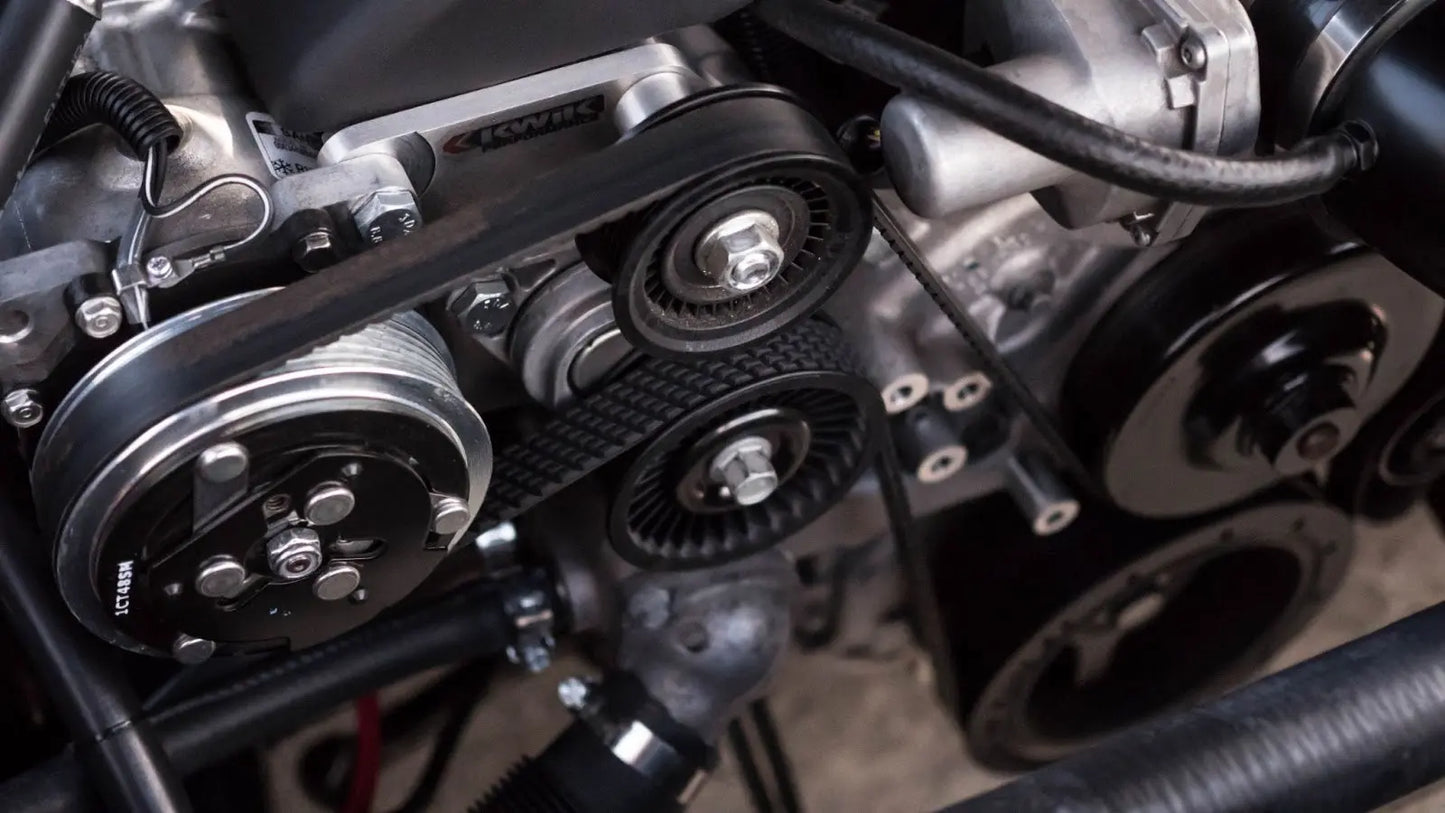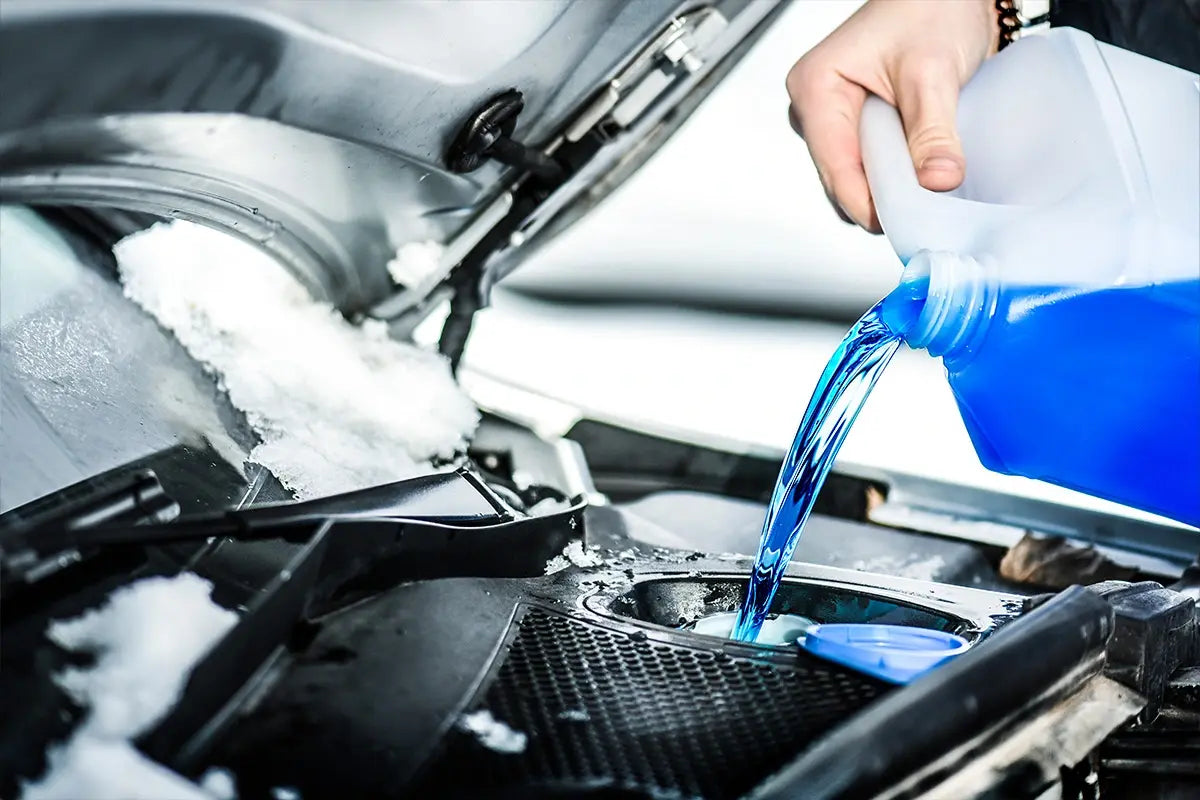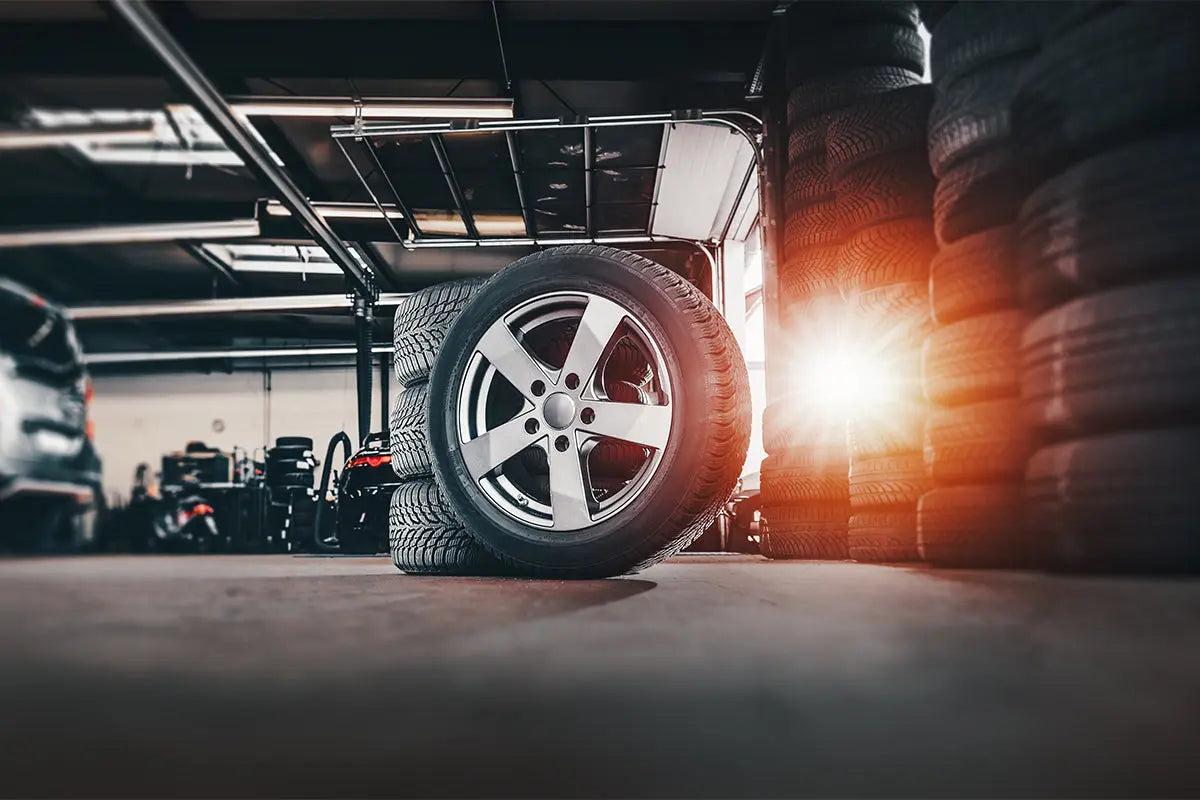
There’s not a lot of great reasons to suddenly hear a loud squealing noise, and almost none when it’s coming from your car.
Every element under the hood is designed to work in tandem with other parts as one system, and loud squealing noises could result from a few major components having a hard time.
However, there’s one in particular that you would definitely want to take care of right away.
Inside most modern cars is at least one drive belt, otherwise known as a serpentine belt. There may be two or three more, depending on how your engine system was designed.
The serpentine belt loops around a spinning component of the internal combustion engine and sends mechanical power to other systems in your car like the power steering, alternator, air conditioning unit, and others.
So how can you be sure that you’re having serpentine belt issues? And what do you do if that is the case? Shine Armor is here to walk you through what to look for and what to do.
Read on to learn more in this article of shine armor blog!
How To Tell It’s The Serpentine Belt Being Noisy
As we said, there are a few reasons you could be hearing a squealing noise when you drive, and none of them are too much fun.
You can usually tell that the noise you’re hearing comes from your drive belt if it’s persistent as soon as you turn on your car and is noticeably coming from the front of your vehicle.
It’ll become more aggressive if you accelerate suddenly or try to make a U-Turn, as well as if it’s wet outside due to rain or humidity.
Other signs of belt damage will be seen in other systems starting to struggle because the belt provides power to them.
Along with the squealing noise, you might notice your power steering lacking energy. This will make it harder to steer, and you’ll notice immediately.
Another major system tied to the drive belt will be your air conditioning, so if you’re trying to crank the cold air but you just aren’t getting it to take note.
The belt itself more than likely won’t set off any lights in your dashboard, so it’s important to be aware of any failings in your car's system and get them checked out right away. Because the serpentine belt is also connected to your alternator, you might have a hard time even turning your car on if the problem is left alone for too long.
Understanding the Serpentine Belt
Before we discuss the noise, let's understand what the serpentine belt does. The serpentine belt is a long, winding belt that runs through a series of pulleys in your engine. It's responsible for powering essential components such as the alternator, air conditioner compressor, power steering pump, and more. Essentially, it keeps many vital systems in your car running smoothly.
Why Is The Belt Squealing?
There are a few reasons you might be hearing that high pitch squeal whenever you start up your engine, and some are worse than others. It could be a misalignment, or it could be the wrong kind of fluid getting onto the drive belt.
No matter what it ends up being, though, make sure to identify and take care of whatever it is as soon as you can.
Related Products in shine armor:
Worn Out Serpentine Belt
Like most systems in your car, the biggest enemy of the serpentine belt is time itself. Today's belts are built to be durable, but after around 75,000 miles, you’re starting to push what it can handle.
And it isn’t just the belt itself. The whole system is made up of pulleys and spinning grooves that hold the belt as it whips around. These will also begin to age and create more of a chirping sound.
The grooves and the belt begin to wear down each other over the years due to friction, leading to cracks in the belt.
Too many cracks can mean your belt loses its tightness in the pulley system, resulting in slippage, or worse, they could cause the belt to snap altogether.
Time can wear down just about any aspect of your vehicle, which is why we put so much energy into developing products that ensure your car will last.
Our Revive Car Scratch Remover won’t heal an old serpentine belt, but it will cover up all the scratches you may have accumulated over the years, leaving you looking like you just rolled off the lot again.
Misaligned or Worn Out Pulleys
There’s a whole system of pulleys and mechanisms that keep the serpentine belt in place. The pulleys can get worn out or damaged, and that will pretty quickly lead to a loose belt.
There’s also a drive belt tensioner. Its job is to keep the belt tension high. It does this by pulling out on the belt from the inside track, and that’s its only job, so it’s fairly reliable and takes a while to wear out.
However, it can get locked up due to debris or damage; just like everything else, it wears down over time. You might have a brand new belt, but it will struggle to remain perfect on the track if the tensioner isn’t doing its job properly.
Exposure to Antifreeze
Antifreeze can be a life-saver when it comes to controlling the temperature of your internal engine. You certainly don’t want an overheating engine when the hot summer rolls around.
But it can also be extremely hazardous to you and your vehicle. Even a small amount of coolant fluid can damage a drive belt, whether it drips from a leak in the hoses or it’s blown out from the engine fan.
To make things worse, antifreeze isn’t something you can just wash off; it does its damage pretty immediately. If this is what’s causing the noise, then you’re more than likely looking at a replacement.
Weather
Weather can also play a big role in how long a serpentine belt will last- Cold temperatures will cause the material the belt is made out of to become brittle and more prone to damage faster.
If you notice the squealing noise is strong in the morning when it’s cold, but goes away as the engine warms up and the day gets hotter, then you might not have a bad belt.
It’s still important to get it looked at, of course, but if it’s just that the belt is warming up, you might not have to spend a few hundred dollars replacing it.
If you live somewhere with pretty extreme weather, you might need some extra protection, not just for your drive belt but for your exterior that has to face it every day. That’s why we developed our Graphene Ceramic Spray. It’s an easy-to-use, long-lasting coating spray that gives your exterior a harder-than-steel quality at an affordable price.
Wear and Tear
Over time, the serpentine belt can wear down. Cracks, fraying, or missing grooves on the belt's surface can create noise as it moves through the pulleys.
Contaminants
Oil, coolant, or other fluids leaking onto the belt can lead to noise as well as accelerated wear.
- buy exterior products from shine armor
- buy interior products from shine armor
Misalignment Due to Improper Installation
Due to the high-tension nature of the drive belt, it requires a high level of precision on the track to properly function.
This means that unfortunately, you could have a brand new serpentine belt and brand new pulleys but still hear the squealing noise.
Fortunately, this issue can be fairly simple to diagnose- If you just got a new serpentine belt installed and it still makes that noise, odds are your mechanic didn’t do the job correctly.
Make sure that the pulleys and belt tensioner are also installed correctly because any element of the belt design can throw the whole thing off if not in the precise placement.
Bad Tensioner
The belt tensioner provides the correct amount of belt tension, allowing the serpentine belt to operate optimally. It’s basically a mechanism where a pulley is connected to an adjustable pivot.
Clearly, proper tension is necessary.
Without it or with seized belt tensioners, a serpentine drive belt will start to slip, damaging it faster. And as a result, it’ll produce the belt noise.
Normally, an old or bad spring-loaded automatic belt tensioner can become weak. Such a belt tensioner can make a loose serpentine belt fall off the tensioner. A serpentine belt needs the right amount of tension to function correctly. If it's too loose or too tight, it can produce noise.
Belt Slippage
Slippage can be due to loss of belt tension, a weak automatic tensioner, or wrong pulley alignment.
When the belt slips, the friction between the belt and accessory drive pulleys causes the drive belt to overheat, producing a high-pitched squealing noise.
The bottom line is, if you spot issues with your serpentine drive belt, get it checked out by a professional mechanic ASAP.
If you ignore the belt noise, the entire belt could eventually slide off of the pulleys. And all the key engine components will stop functioning. Don’t take this lightly because a squeaky belt can also harm your engine.
What Does Serpentine Belt Noise Sound Like?
Serpentine belt noise can manifest in various ways, and the sound you hear can be a clue to the underlying issue:
Squealing: A high-pitched squeal, especially when starting the engine or turning the steering wheel, often indicates a slipping or misaligned belt.
Chirping: A chirping noise at a consistent rate may result from a glazed or worn-out belt surface.
Growling or Rumbling: A growling or rumbling noise could be a sign of a bad tensioner or idler pulley.
Why You Shouldn't Ignore It
Ignoring serpentine belt noise can lead to serious consequences:
Component Failure: If the serpentine belt fails, the components it drives, like the alternator, will stop working. This can result in a dead battery, leaving you stranded.
Loss of Power Steering: A malfunctioning serpentine belt can lead to the loss of power steering, making your vehicle harder to control.
Engine Overheating: If the water pump isn't functioning due to a bad belt, your engine may overheat, causing severe damage.
Expensive Repairs: Addressing the issue promptly can save you from more costly repairs down the line.
What Should You Do If Your Belt Is Squealing?
A damaged or failing serpentine belt is pretty serious and should be taken care of as soon as you notice it.
If the belt completely snaps, then you could be stranded with an inoperable car because it’s tied to other essential systems. We’re always trying to avoid expensive tow-truck calls, so make sure to get your belt replaced as soon as possible.
Even before complete failure, a faulty belt will significantly reduce the performance and safety of your car. With a suddenly depleted amount of energy in your power steering, you might find yourself struggling to drive as you’re used to, meaning that you’re more likely to be in an accident.
It doesn’t cost too much to replace a serpentine belt either; for most cars, they could be in the $50 range, and your local mechanic shouldn’t take much more than an hour or so to replace it.
The grand total to replace the whole system could be between $200 and $300, which is much more affordable than a tow. Not to mention any other system that a snapped belt may damage.
In Conclusion
No one likes hearing loud, high pitch noises coming from their engine area; it’s pretty much never the sign of a good time.
But a loud noise is your car's way of letting you know something is wrong, and it’s always important to figure out exactly what the issue is as soon as you get the chance.
A problem like a worn-out serpentine belt can start off as annoying but grow into a major issue- The kind that stops your car from working at all.
It might just be a misalignment, or you might need a new belt and pulley system altogether. But taking care of it sooner rather than later is going to save you money in the long run, no matter what the issue is.
Related blog posts:






